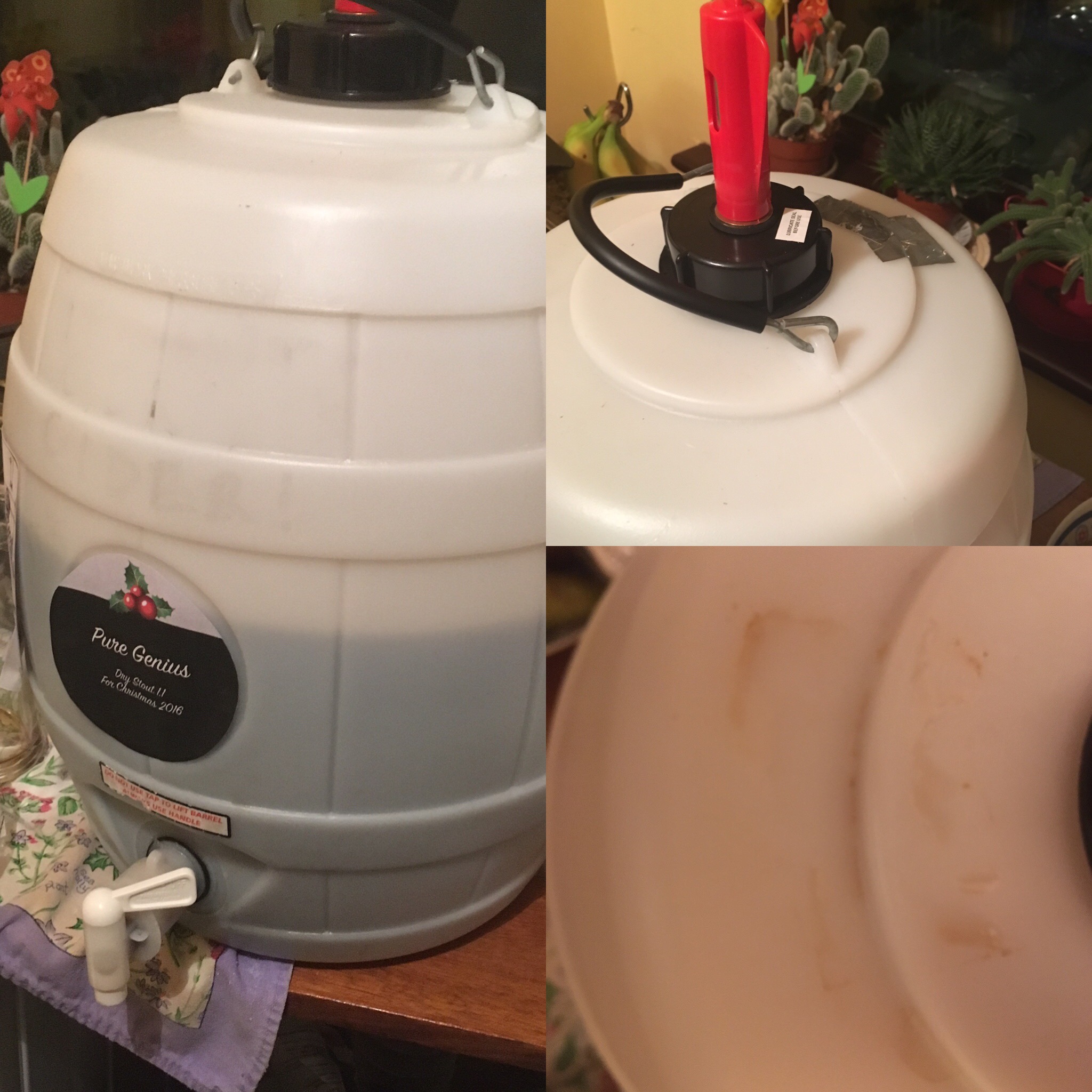Rescuing a Stout
[caption id="attachment_8168" align="alignleft" width="300"] Barrel Casaulty[/caption]
Barrel Casaulty[/caption]
I brewed a barrel of Dry Stout for Christmas Day and when I tested it on the 23rd, I found it to be completely flat. Flat as a French crepe.
Usually getting enough CO2 into a brew is not a problem for me. I'm still tuning my priming process. My beers tend to be on the lively side, so I'm either racking them too early or adding too much sugar to prime them.
This particular problem turned out to be caused by a split barrel. The first plastic barrel I bought has developed a split, which I discovered when I added a CO2 canister to the barrel. All was not lost however, as a bit of gaffer tape managed to hold the split for long enough for us to get a few pints out of it on Christmas Day. It required a lot of gassing as the CO2 would escape within an hour or so.
[caption id="attachment_8169" align="alignright" width="300"] The regassed product[/caption]
The regassed product[/caption]
The Stout itself was not too bad. There was no signs of contamination. If anything it was a little thin because I didn't get a good efficiency out of the grain when I brewed it. The original gravity was very low. What we ended up with was a session stout. There was no real chance of getting drunk on it.
Once we'd had enough, it was time to write off the rest unfortunately. It probably would not have kept. The barrel has been retired and will be replaced by two smaller 2 gallon ones.
As I type this, I'm about to brew another stout. The boiler is on heating water for the mash. This time, I'm going to up the amount of grain versus water in order to get a good high gravity. I never get the gravities in the recipes, probably due to home brewing equipment but also due to slightly older grain.